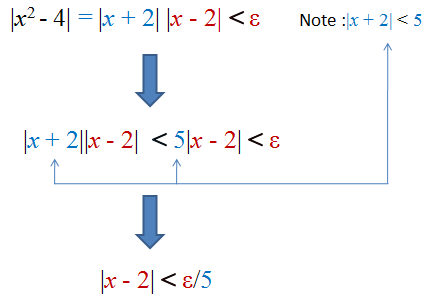Limit by epsilon-delta proof: Example 2
This is the overdelayed continuation of the discussion on the definition of limits. In this post, we discuss another example.
Prove that the .
Recall that the definition states that the limit of as
approaches
if for all
, however small, there exists a
such that if
, then
.
From the example 1, we have learned that we should manipulate , to make one of the expressions look like
. Solving, we have
.
Note that we have accomplished our goal, going back to the definition, this means that if , then
.
Now, it is not possible to divide both sides by (making it
because
varies. This means that we have to find a constant
such that
.
If is confined to some interval centered at
, then we can find
. For instance, suppose
, which is the same as
, then
. In particular
.
Therefore,
. Hence, we have
. But we have two restrictions:
and
so, to be sure that both inequalities are obeyed, we choose to be smaller than
and
abbreviated as
whenever
.
